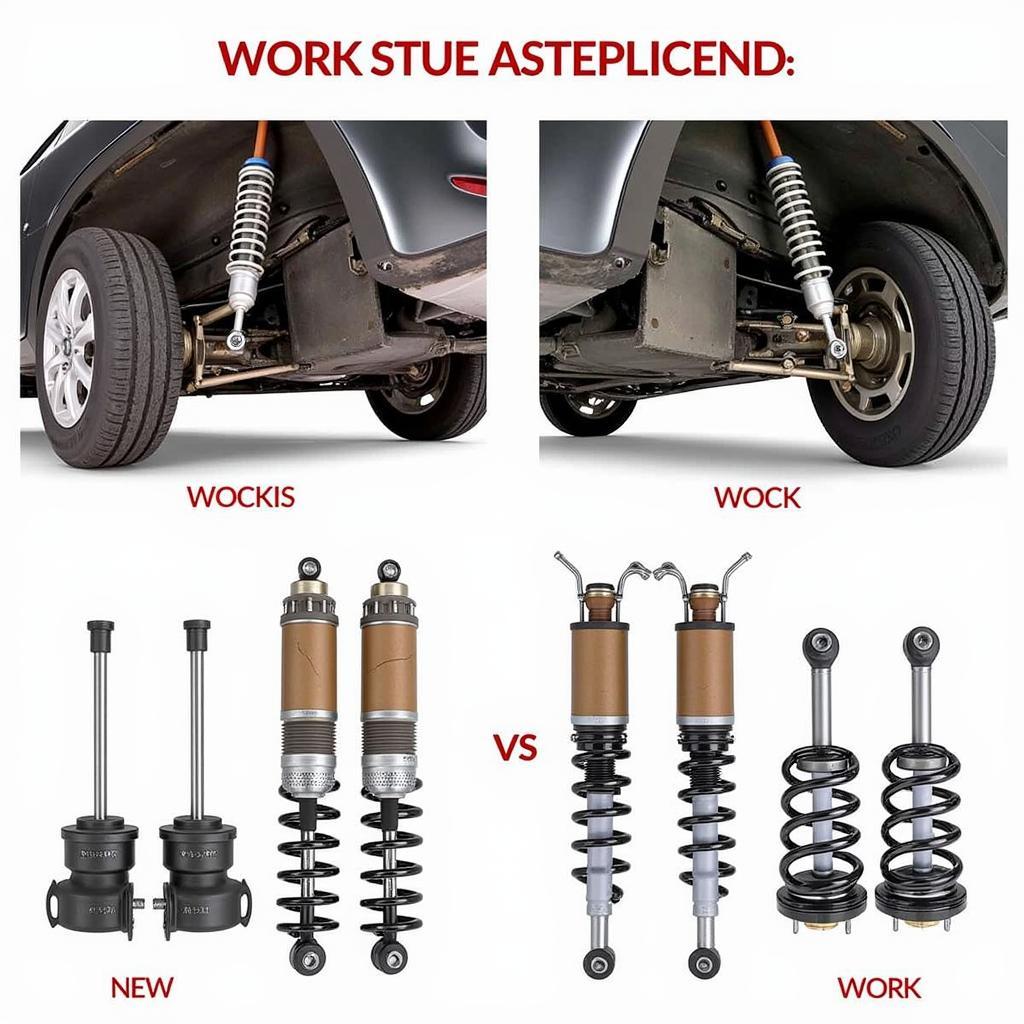Reaching 140,000 miles is a testament to your car’s durability. However, common problems with cars at 140,000 miles can start to surface. Understanding these potential issues can help you stay ahead of costly repairs and keep your car running smoothly for years to come.
What to Expect at 140,000 Miles: Common Car Problems
At this mileage, components experience significant wear and tear. This can lead to a range of issues, from minor annoyances to major malfunctions. Knowing what to look out for can save you time, money, and stress.
Suspension System Issues
Your suspension system takes a beating over 140,000 miles. Expect wear and tear on shocks, struts, and bushings. This can lead to a bumpy ride, poor handling, and uneven tire wear. Listen for squeaks and clunks when driving over bumps or turning.
- Worn shocks and struts
- Deteriorated bushings
- Ball joint problems
 Worn Suspension Components at 140k Miles
Worn Suspension Components at 140k Miles
Regular inspections and timely replacements are essential for maintaining a safe and comfortable ride.
Transmission Troubles
Transmission problems can be a significant concern at high mileage. Slipping gears, rough shifting, and delayed engagement are common signs of wear. Regular fluid changes and filter replacements can help prolong transmission life.
- Transmission fluid leaks
- Worn clutches or bands
- Solenoid issues
Addressing transmission issues early on can prevent more costly repairs down the road.
Engine Performance Decline
As your engine ages, its performance can decline. Reduced power, decreased fuel efficiency, and rough idling can be signs of wear and tear. Regular maintenance, including spark plug replacements and fuel system cleaning, can help maintain engine performance.
- Worn piston rings
- Decreased compression
- Clogged fuel injectors
Regular oil changes are crucial for engine longevity. Using high-quality oil can also provide added protection against wear. Don’t ignore warning lights or unusual noises coming from your engine.
Electrical System Gremlins
Electrical problems can become more frequent at higher mileage. Corrosion, worn wiring, and failing sensors can lead to various issues, from flickering lights to complete electrical system failure.
- Battery problems
- Alternator issues
- Faulty sensors
Regularly checking your battery and alternator can help prevent unexpected breakdowns.
Maintaining Your High-Mileage Car
Proper maintenance is crucial for keeping your car running smoothly at 140,000 miles and beyond. Follow your manufacturer’s recommended maintenance schedule and address any issues promptly.
“Regular maintenance is like an insurance policy for your car,” says John Davis, a seasoned automotive technician with over 20 years of experience. “It’s an investment that pays off in the long run.”
Common Problems with Cars at 140,000 Miles: Conclusion
While encountering common problems with cars at 140,000 miles is expected, proactive maintenance can help minimize issues and extend your car’s lifespan. Don’t hesitate to reach out to the experts at AutoTipPro for assistance. You can reach us at +1 (641) 206-8880 or visit our office at 500 N St Mary’s St, San Antonio, TX 78205, United States.
“Addressing small issues before they become big problems is the key to keeping your high-mileage car on the road,” adds Sarah Miller, a certified mechanic with extensive experience in high-mileage vehicle maintenance.




Leave a Reply